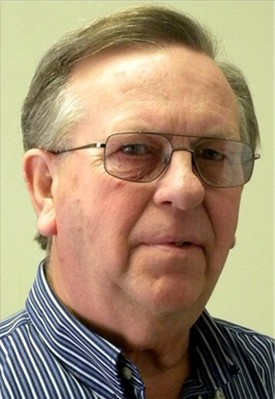Disaster Prep For The Rest Of Us
by Dave Robinson

Water
Originally published February 28, 2012
The Red Cross (www.redcross.org) and FEMA (www.ready.gov) are two of the best disaster preparedness online resources. Both websites urge the public to “Get a kit, make a plan, and be informed.” The first item mentioned on both websites, under “get a kit” is water. Both organizations recommend storing a gallon per day per person for a three day period. Let me see, there are five people living at my house, three times five times three comes to... a lot of water. In fact the Red Cross says that the three day supply is only in the event you have to evacuate. For home purposes, you should have a two week supply on hand.
In reality, we can go several days without food, but water is essential to our existence. Without water we don’t last very long. Clean, pure drinking water is a must. We seem to have an abundance of water in our area most of the year. However I can recall in recent history that both Powers and Coquille have issued “boil your drinking water” orders to their city water consumers. Even this past summer in Myrtle Point many of us stopped drinking city water because of an objectionable odor.
There are two primary ways to purify water: boiling and adding bleach. If tap water is unsafe because of water contamination (from floods, streams or lakes), boiling is the best method. Cloudy water should be filtered before boiling or adding bleach. Filter your water using coffee filters, paper towels, cheese cloth or a cotton plug in a funnel.
Boiling is the safest way to purify water. Bring the water to a rolling boil for one minute then let the water cool before drinking.
If boiling is not possible, treat the water by adding liquid household bleach, such as Clorox or Purex. Household bleach is typically between 5 percent and 6 percent chlorine. Avoid using bleaches that contain perfumes, dyes and other additives. Be sure to read the label.
Place the water (filtered, if necessary) in a clean container. Use basically ⅛ teaspoon of bleach per gallon of water up to ¼ teaspoon if cloudy or very cold. Mix thoroughly and allow to stand for at least 30 minutes before using (60 minutes if the water is cloudy or very cold). More information is available on the State of Washington, Department of Health website.
Personally I own a water filter that requires no electricity. It works with a ceramic filter system and strains out all the harmful bacteria. It even filters out objectionable odors as I found out this summer. It is available online from British Berkefeld. Another option is one developed by the Texas Baptist Men's Water Ministry, who take their filter into areas recovering from a disaster. Check it out at www.monolithic.com. It is built from two five gallon plastic buckets with ceramic filters. You can even make your own. Buy the components and drill the appropriate holes in the buckets and bingo, instant water filter. I highly recommend that every home have a filter of some type to purify drinking water. Even if for no other reason than it smells nasty.
As always, if you have questions or comments you may email me at disasterprep.dave@gmail.com.
Note: Dave Robinson is Bandon's Postmaster and has worked for the postal service for 30 years. He has a background in law enforcement, served in the Air Force in Vietnam, worked nine years for the Coos County Sheriff's Department, and serves on the Myrtle Point School Board, where he lives.
additional columns by Dave Robinson

